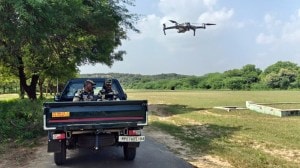What’s wrong with tamarind trees in the City?
CHANDIGARH, June 14: Ten 40-year-old imli trees shading the roads of Sector 26-7 and 27-19 are apparently dying a slow death and several oth...

CHANDIGARH, June 14: Ten 40-year-old imli trees shading the roads of Sector 26-7 and 27-19 are apparently dying a slow death and several others of the species are already dead but have yet to be removed by the Horticulture Department.
Like all living things, trees age and die — it’s part of the life cycle — but the ratio of dead trees to living ones is comparatively high on the road leading to the Golf Club.
The Horticulture Department landscape officer in charge of the area denies that anything is seriously wrong with the imli trees. He says that prolonged winter kept the sap down for a longer time than usual. New leaves sprout on the imli before the the old leaves are shed but there’s no sign of new leaves on the Golf Club road trees. “Just wait a few days; they’ll sprout,” he says.
PAU’s Chandigarh representative, Satish Narula, agrees that frost and prolonged winter do the imli no good. But he argues that if seedlings can survive Chandigarh winters long enough to grow into trees then a full grown tree ought to be able to withstand a few extra days of low temperature.
“I think they’re dying” he says and cites several reasons to explain why: “Sweepers burn dry leaves under the trees causing smoke-damage to the canopy and the Electricity Department does not prune the branches but mercilessly hacks them back with their own tools thus inviting fungus and other diseases. Also the Horticulture staff never checks for white ant attack.”
“Na-a-ah,” says the landscape officer, “termites don’t attack imli so that can’t be it. These trees aren’t suffering from any disease; it’s just the annual die-back. Happens every year.”
But Narula avers that “termite damage becomes visible only in the later stages after the insects have eaten into the phloem. The Horticulture Department officers are waiting for physical symptoms to appear before treating the trees for disease, but such symptoms can become visible only in the advanced stage. By that time no internal system remains intact to carry on the life process so treatments are useless.”
Is it true that imli is resistant to termites? According to Narula, there is no experimental data that supports this assertion. “Just because it so happens that the Horticulture staff have not seen termites attacking the trees that’s not reason to deny protective treatment,” he says.
Horticulture Department executive engineer Hardev Singh thinks that imli was not the best choice for plantation in the first place: “If some other austere genra would have been planted instead of imli the condition would have been much better. Anyway, more than 200 imli trees are planted in Chandigarh.”
Tamarindus indica linn: imli … or to go back to another old name, tamr-e-hind . Tamr is the Arabic word for “date” ( khajoor ); the Arabs referred to this tree as the “date of India” and it is this name that was anglicised to give us the English name, tamarind. This deciduous tree has two varieties: West Indian with shorter pods containing one to four seeds, and East Indian with long pods containing six to 12 seeds.
It’s recommended as an avenue tree because of its shade, ornamental flowers, longevity and its resistance to drought. More than 40 species of insects such as lac insect and milli-bug, may infest the trees. Imli is highly acidic . The pulp of the seed pods is acidic, the bark is acidic and so are leaves and feeder roots. The entire tree exudes acid and therefore hardly anything will grow under an imli tree.
Photos





- 01
- 02
- 03
- 04
- 05

























